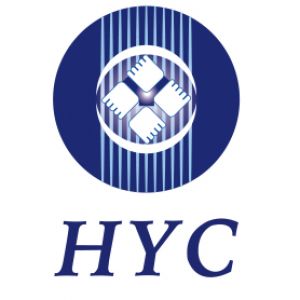How do fiber optic connectors achieve precise alignment between fibers?Posted by Bella Tse on January 7th, 2020 When the two optical fibers are connected, due to the difference in position, shape and structure of the two optical fibers, the energy cannot be 100% transferred from one fiber to the other, that is, the connection loss will occur. The two connected fibers must be precisely aligned to ensure low loss.The main function of the optical fiber connector is to connect two optical fibers quickly, so that the optical signal can be continuous to form an optical path. How do fiber optic connectors achieve precise alignment between optical fibers? The types of fiber optical connectors are variable. However, the basic warranty for precise alignment between optical fibers depends on two factors. The first is ceramic ferrules with precise inner diameter, outer diameter and concentricity, which is warranted by mechanical fabrication of ceramics. The second is ceramic sleeves with a cleft, which is a clever design. Fig.1 shows how two optical fibers are aligned through a ceramic sleeve. The inner diameter of sleeve is a little smaller than the outer diameter of the ferrules. The ferrules can be inserted into the sleeve because of the cleft. The expanded sleeve constricts the ferrules to ensure precise alignment. Fig.1 Alignment between two optical fibers The core size of the single mode fiber (SMF) is about 8~10μm. The two connected fibers must be precisely aligned to ensure low loss. Fig.2 shows how much the lateral offset between two optical fibers influence the IL. The curve is exponential. A small lateral offset such as 2.4μm will introduce IL of 1dB. Thus the lateral offset between the two fibers must be kept <0.5μm for SMF fiber optic connectors. Fig.2 IL vs the lateral offset between two optical fibers
Anti-reflection (AR) coating is usually employed to reduce BR at interface. However, it is not considered for fiber optical connectors. Firstly, AR coating will add to the cost. Secondly, the fiber connection is not fixed. Repeated plugging is required for fiber optical connectors, which will damage the AR coating. Can we have the fiber endfaces AR coated and separated. Fig.3 shows how the longitudinal gap between two optical fibers influences the IL. A gap of 50μm will introduce an excess IL of nearly 1dB, which is intolerable in optical fiber communication system. Thus we get the common view that the fibers must be in contact and the endfaces can’t be AR coated. BR happens at the interface between two different medias. The air between fiber endfaces must be squeezed out and thus the fiber endfaces are in physical contact (PC) as a uniform media. Because the optical fibers are fixed at the center of ceramic ferrules, any roughness on the ceramic surfaces will affect the physical contact between optical fibers. In order to keep the physical contact between fibers, the ferrule endface is spherically polished with the fiber endface at the top of the sphere, which is the second clever design. As shown in Fig.1, the ferrules are inserted into the sleeve and the endfaces are deformed under pressure. The deformation of endfaces ensures the physical contact. The physical contact depends on deformation of the endface. Ceramic material is abrasion resistant and elastic, which are why it is selected instead of glass. Thus we get the common view that the fibers must be in contact and the endfaces can’t be AR coated. BR happens at the interface between two different medias. The air between fiber endfaces must be squeezed out and thus the fiber endfaces are in physical contact (PC) as a uniform media. Because the optical fibers are fixed at the center of ceramic ferrules, any roughness on the ceramic surfaces will affect the physical contact between optical fibers. In order to keep the physical contact between fibers, the ferrule endface is spherically polished with the fiber endface at the top of the sphere, which is the second clever design. As shown in Fig.1, the ferrules are inserted into the sleeve and the endfaces are deformed under pressure. The deformation of endfaces ensures the physical contact. The physical contact depends on deformation of the endface. Ceramic material is abrasion resistant and elastic, which are why it is selected instead of glass. Fig.3 IL vs the longitudinal gap between two optical fibers Further Reduction of Back Reflection Fig.4 Relationship between the added return loss and angle of the endface Fiber optic connectors are the most basic optical passive components for optical fiber communication systems. The basic specification requirements for them are low insertion loss (IL) and high return loss (RL), i.e. low back reflection (BR). However, as the most widely employed components, low cost and easy connection are equal important as the specifications. About HYC Like it? Share it!More by this author |


